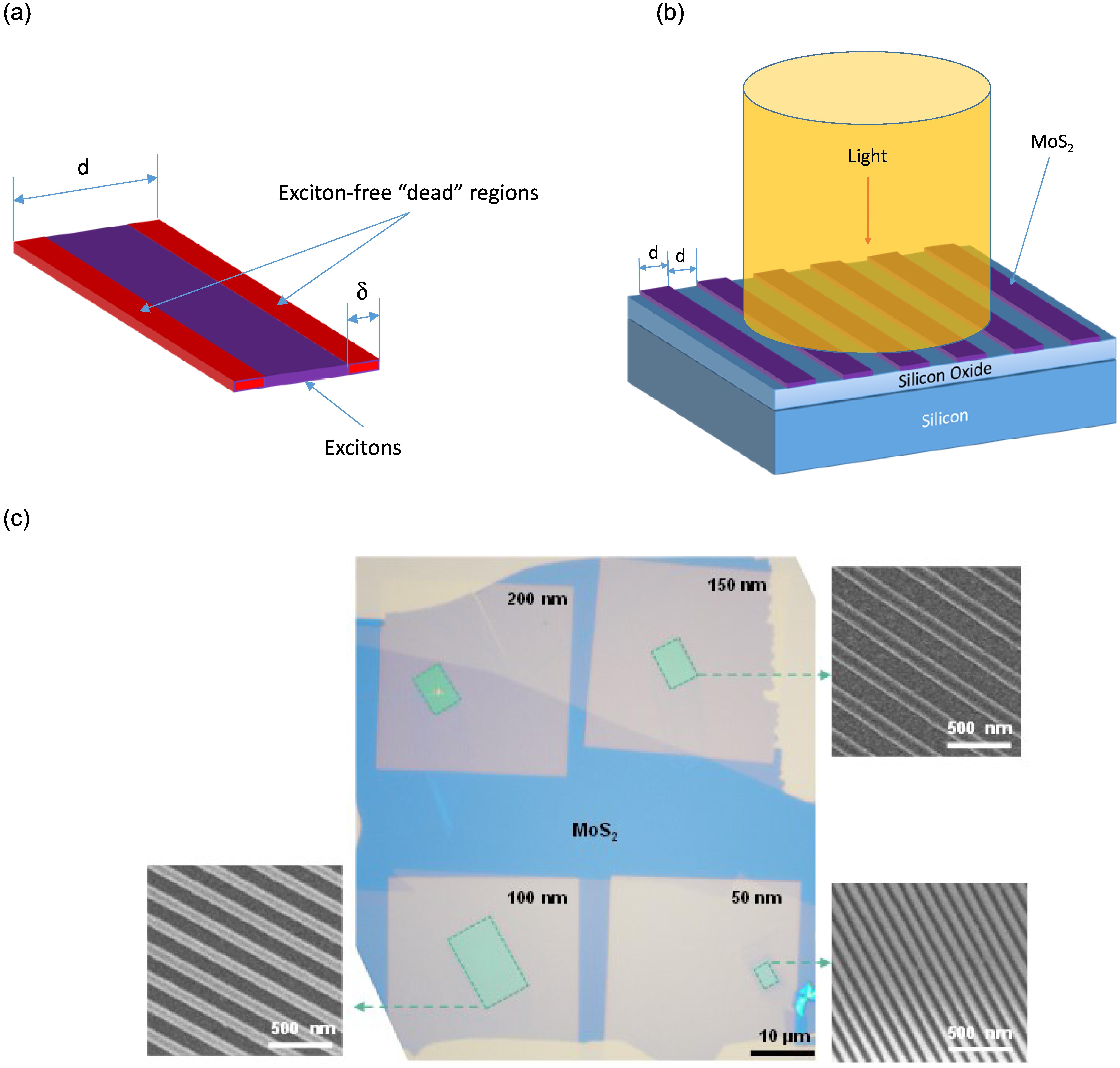V. G. Kravets, Zhaolong Chen, Yashar Mayamei, K. S. Novoselov, A. N. Grigorenko, "Bilayer MoS2 nanoribbons: observation of optically inactive “exciton-free” regions and electrical gating of optical response," Photonics Res. 13, 1021 (2025)
Search by keywords or author
- Photonics Research
- Vol. 13, Issue 4, 1021 (2025)

Fig. 1. MoS 2 MoS 2 MoS 2 d = 50 nm

Fig. 2. Comparison of MoS 2 d = 50 nm MoS 2 d = 150 nm MoS 2
Fig. 3. Gating of MoS 2 d = 50 nm MoS 2 d = 150 nm MoS 2 d = 50 nm MoS 2 V s = − 2 V V d = 0 d = 150 nm MoS 2 V s = − 2 V V d = 0 d = 150 nm MoS 2
Fig. 4. Surface-state-induced band bending in MoS 2
Fig. 5. A and B excitons in monolayer and bilayer MoS 2 MoS 2 ∼ 1.85 eV ∼ 2 eV MoS 2

Set citation alerts for the article
Please enter your email address



